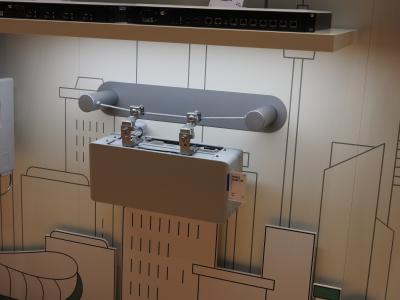Samsung’s Woojune Kim told Fierce several years ago that Samsung was being very patient when it comes to establishing a presence in the U.S. infrastructure market, where it had virtually no market share at the time.
That patience appears to be paying off, as Samsung is the lead vendor for Verizon’s virtualized radio access network (vRAN) deployment – the largest in the world thus far. It’s also a key vendor for Dish Wireless, where it recently delivered 24,000 radios to support the vRAN and open RAN network. It’s been a supplier for UScellular’s LTE and 5G networks.
Kim, who was appointed president and general manager of Samsung’s Networks business in December 2022, recently took part in an email Q&A with Fierce and provided an update on Samsung’s progress in vRAN and the U.S. market.
Asked about Samsung’s prospects with T-Mobile and AT&T, he declined to speak to ongoing conversations with specific operators, but said “we are confident our continued leadership with vRAN and open RAN is going to be a key driver for us in securing new opportunities in the U.S. and globally.”
One of the tougher nuts to crack for Samsung in the U.S. has been T-Mobile, which signed separate five-year contracts with Ericsson and Nokia in 2021. In an April 16, 2023, report for investors, analysts at Raymond James said they heard speculation that Samsung would win something at T-Mobile, most likely at Nokia’s expense.
“To date, the T-Mobile 5G deployment has been roughly 50-50 Ericsson/Nokia. Sprint had deployed gear from Samsung, which was part of the rationale why T-Mobile might do a deal with the Korean supplier,” wrote Raymond James analyst Simon Leopold.
A Samsung representative said the company doesn’t comment on rumors or speculation. T-Mobile also didn’t comment on the report, which was first reported by Light Reading.
During Nokia’s earnings call on Thursday, CEO Pekka Lundmark was asked about rumors of Samsung taking market share in the U.S. and he said Nokia’s relationship with T-Mobile is “extremely strong.”
Cable and FWA
Samsung is also winning contracts with cable providers, like Comcast, where it’s working to deploy 5G RAN solutions to support its efforts to deliver 5G access to consumers and business customers in the U.S. using CBRS and 600 MHz spectrum, Kim noted.

“We understand that each operator is unique and has different deployment requirements, and we listen and respond to their needs,” he said. “The new 5G CBRS Strand Small Cell was designed to help Comcast advance its service expansion strategies and enable them to accelerate their deployments – giving them the flexibility to add 5G coverage almost anywhere with aerial cable lines.”
Comcast is the first operator to use Samsung’s new 5G CBRS Strand Small Cell, a compact and lightweight solution designed to be installed on outdoor cables. It consists of a radio, baseband, cable modem and antennas, all in one form factor. The solution is also equipped with Samsung’s in-house chipset, a second-generation 5G modem SoC, which, he said, delivers increased capacity and performance.
Asked about supplying gear for rural U.S. operators that are on the hook to rip out and replace Huawei gear, Kim didn’t address that directly but said Samsung is committed to bringing reliable and robust internet access to hard-to-reach, remote areas in smaller U.S. markets.
He said a growing number of broadband leaders, like Mediacom Communications and Mercury Broadband, have selected Samsung to help them leverage fixed wireless access (FWA) to effectively expand coverage in rural areas across the U.S.
“We are collaborating with these operators and others to provide CBRS solutions to extend FWA services to rural areas across the U.S.,” he said.
Open RAN
Since vRAN is considered a stepping stone to open RAN, it would follow that Samsung’s success in vRAN puts it on solid ground for open RAN.
Samsung recently introduced what it refers to as vRAN 3.0, its latest phase of vRAN. It brings forth a “smarter” virtualized platform that is O-RAN compliant and not only supports 5G, but also provides multi-platform support for 2G and 4G as well, according to Kim.
He said Samsung has the unique capability to design, develop and manufacture 4G and 5G network chipsets in-house, and it’s been a strong foundation for its network evolution journey, including vRAN/open RAN development.
As for the current state of open RAN deployments, he said that while it’s still in the early stages globally, Samsung has been a recognized leader in helping global operators bring the concept of open RAN to life.
“We are not just talking about open RAN, but showing true open RAN in the field today with multi-vendor integration,” he said.